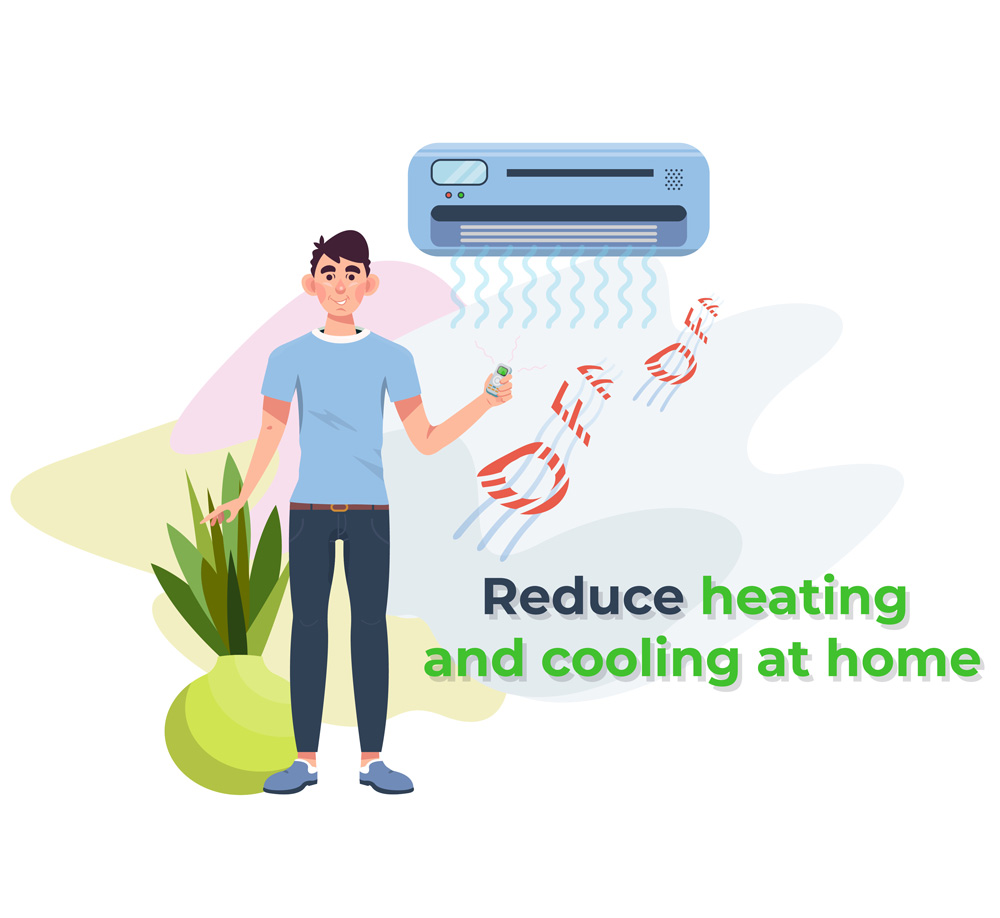Energy Saving Tips
The tips below can help you conserve energy and save money on your energy bills.
Air Conditioning Tips
Your Air Conditioner
- A new, high efficiency, 14.3 SEER air conditioner uses about half the energy of a 15-year-old air conditioner. If your air conditioner is 10 years old or less, maintain it well and keep it. If it is between 10 to 15 years old, minor repairs and service are still acceptable. If the air conditioner is 10 to 15 years old or older and needs substantial repairs, your best alternative is to replace it with a new, high efficiency system.
- Turn air conditioners to the highest comfortable setting. We recommend 76 to 78 degrees Fahrenheit when you’re home and 80 degrees while you are away. Adjusting your thermostat up a few degrees will have a significant impact on your cooling bill. A change from 73 degrees to 76 degrees — 24 hours a day — could save you approximately 30 percent on your summer cooling costs.
- Clean or replace your air conditioning filter monthly, or as needed.
- Keep coils on the exterior air conditioning unit free of dirt, grass clippings and leaves.
- The “on” fan setting on your central air conditioner can circulate air continuously through your home. This will usually even out the hot spots in your home, and if this practice allows you to set your thermostat at a higher summer temperature, it can also save you money.
- Humidity is a significant load on an air conditioner. While it’s tempting to give your air conditioner a rest on cool nights, watch the weather forecast before you decide to open the windows at night. If tomorrow is going to be hot again, keep the air conditioning on and the home closed through the night to keep the humidity out of the house.
- Have your air conditioning system checked annually by a qualified heating and air conditioning contractor to make sure its working at peak efficiency.
- Use ceiling or oscillating fans to circulate the air.
- During peak cooling hours, solar heat gain can account for one-third of the load on your air conditioner. Close the drapes on the sunny side of your home while you are there, or close all window coverings if you are leaving for the day.
- Turn off unnecessary lights and use energy-efficient fluorescent light bulbs that use less energy and give off less heat.
- Seal air leaks with caulking and weather stripping, and minimize door traffic to keep the cool air inside.
In the Attic
- Cool air ducts in a 120 degree Fahrenheit attic in the summertime need to be fully buried under 6 inches of insulation. Otherwise, heat absorbed by exposed attic ducts can add 20 to 40 percent to your bills.
- Attic floor insulation should be at least R-38 or about 12 inches thick. Do not compress insulation on the attic floor by adding a layer of wood, storing boxes on it or walking across it frequently.
- Your attic should be properly vented to keep it as cool as possible. Check your soffit vents in the roof overhang to make sure they are not clogged with dirt.
Appliances
- Use heat-producing appliances such as your dryer, dishwasher, and range during the cooler nighttime hours.
- Consider using a microwave instead of the oven. Microwave ovens use up to 70 percent less energy than a conventional oven.
- Use kitchen, bath, and other ventilating fans wisely. In just one hour, these fans can pull out a houseful of cooled air.
- To prevent moisture and heat buildup in your laundry room, clean the dryer lint filter before each use, have the dryer properly vented to the outside and regularly check to make sure the vent pipe is clear.
- A dehumidifier running in a damp location that is also open to the outdoors will run continuously, raise your bill and never dry out the damp area. When using a dehumidifier in a damp basement or crawlspace, keep all windows and vents closed in that area.


Heating Tips
Furnaces / Heat Pumps
- Check your furnace filter monthly and replace it when it appears dirty.
- Lower your thermostat temperature to the lowest temperature that is comfortable to your family. You may save as much as 3 percent on your energy bill for each degree you lower your thermostat. Reduce your thermostat setting at night and/or when you are away. A 10-degree setback for eight hours each day could save up to 9 percent.
- The “auto” thermostat setting on central heating systems may save you money. However, if you can decrease your thermostat temperature by operating the fan in the “on” position, you may save even more money.
- If you have a heat pump, keep the outdoor unit clear of grass, leaves and especially drifting snow around the outdoor coil.
- Never switch a heat pump to the “emergency heat” setting on the thermostat, unless the unit is malfunctioning. This switch will turn off your energy efficient heat pump. Using only your backup electric furnace without the heat pump could double your heating costs.
Fireplaces
- Keep your fireplace damper closed tightly when not in use.
- Consider installing doors over the fireplace opening to cut down on drafts and heat loss through the fireplace chimney.
- Do not use a fireplace during periods of extreme cold. Most fireplaces that are open to the living space will increase winter heating costs.g costs.
Around the House
- Seal air leaks with caulking, weather stripping and sheets of plastic on large areas. Air infiltration can account for one-half of your heating costs in a leaky home.
- Close and seal heat registers that attempt to heat a cold, uninsulated garage, porch, or attic storage room.
- Have a professional verify proper insulation levels in walls and ceilings and check to be sure it meets current standards or has not been damaged.
- Keep all windows and doors located near your thermostat closed tightly.
- Keep heat sources such as lamps, away from the thermostat.
- Keep draperies and shades open on sunny days but close them on cloudy days and at night.
- Keep all heating outlets and return-air grills free from obstructions, such as draperies, furniture or rugs. Clean these vents regularly with a vacuum or broom.
Attics / Crawl Spaces
- If you have ductwork in the attic or garage, be sure it is covered with at least 6 inches of insulation. Seal seams and joints in ductwork with duct sealing compound sold at hardware/home centers.
- If your home has a crawl space with air vents in the walls, close the vents and seal with insulation from the inside during the winter.
- Insulate basement and crawl space walls. If your basement or crawl space is a cold, unoccupied area, then the floor between the cold area and the living space should also be insulated.



